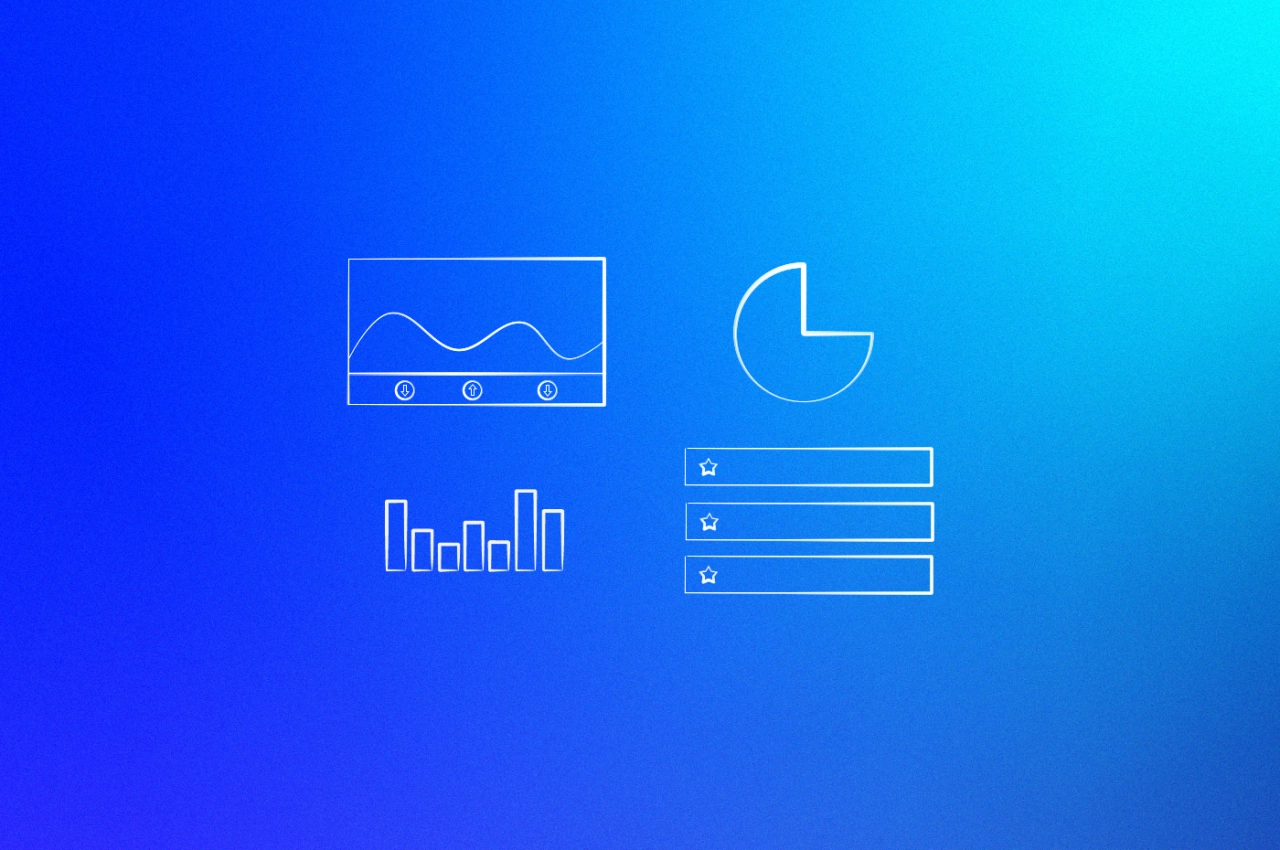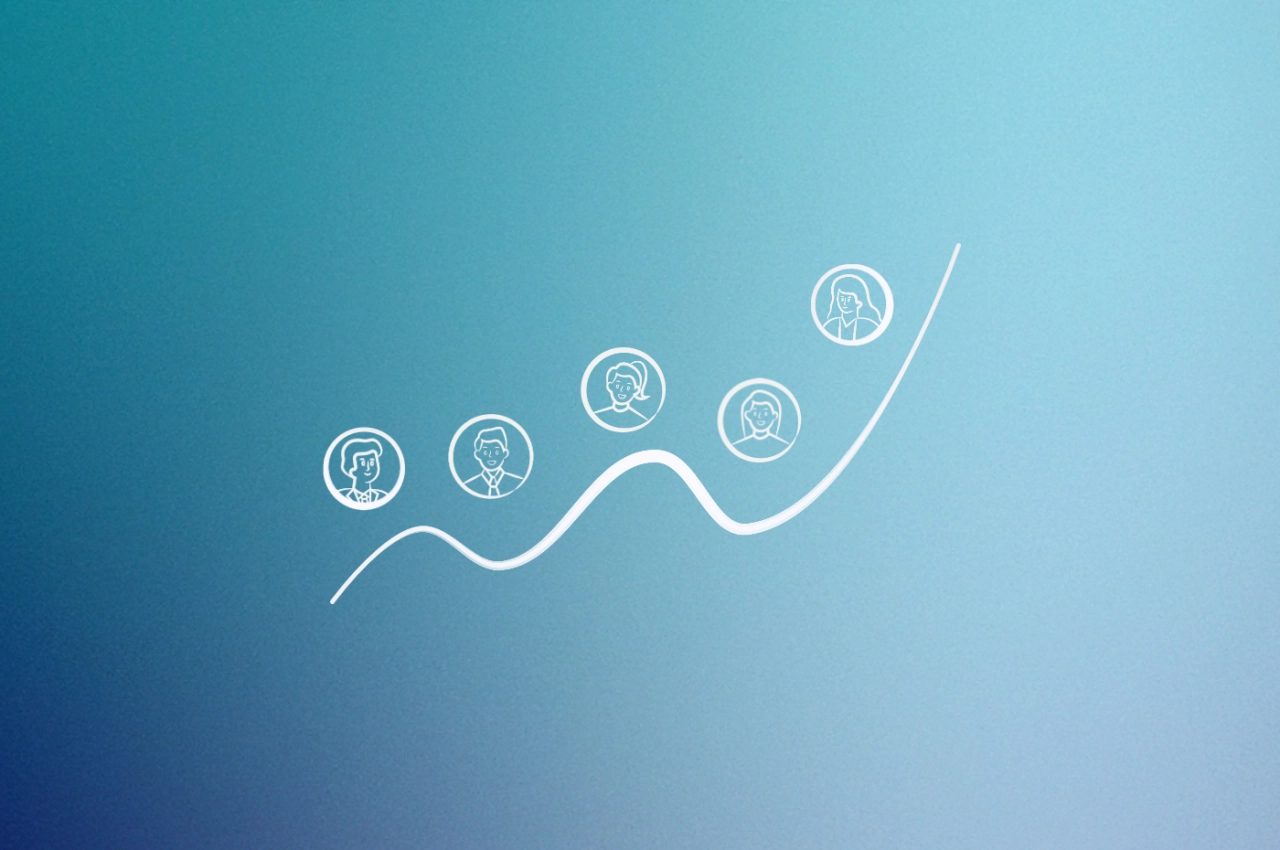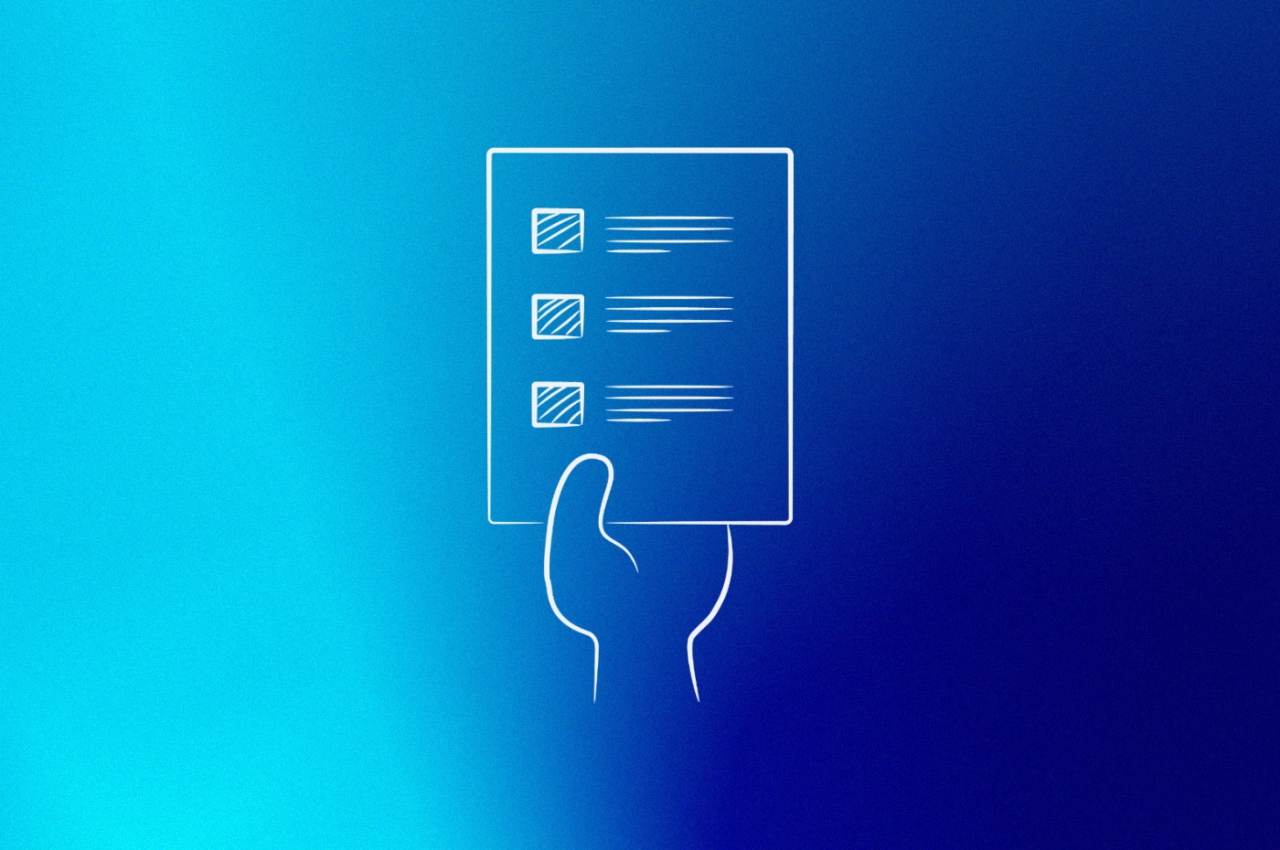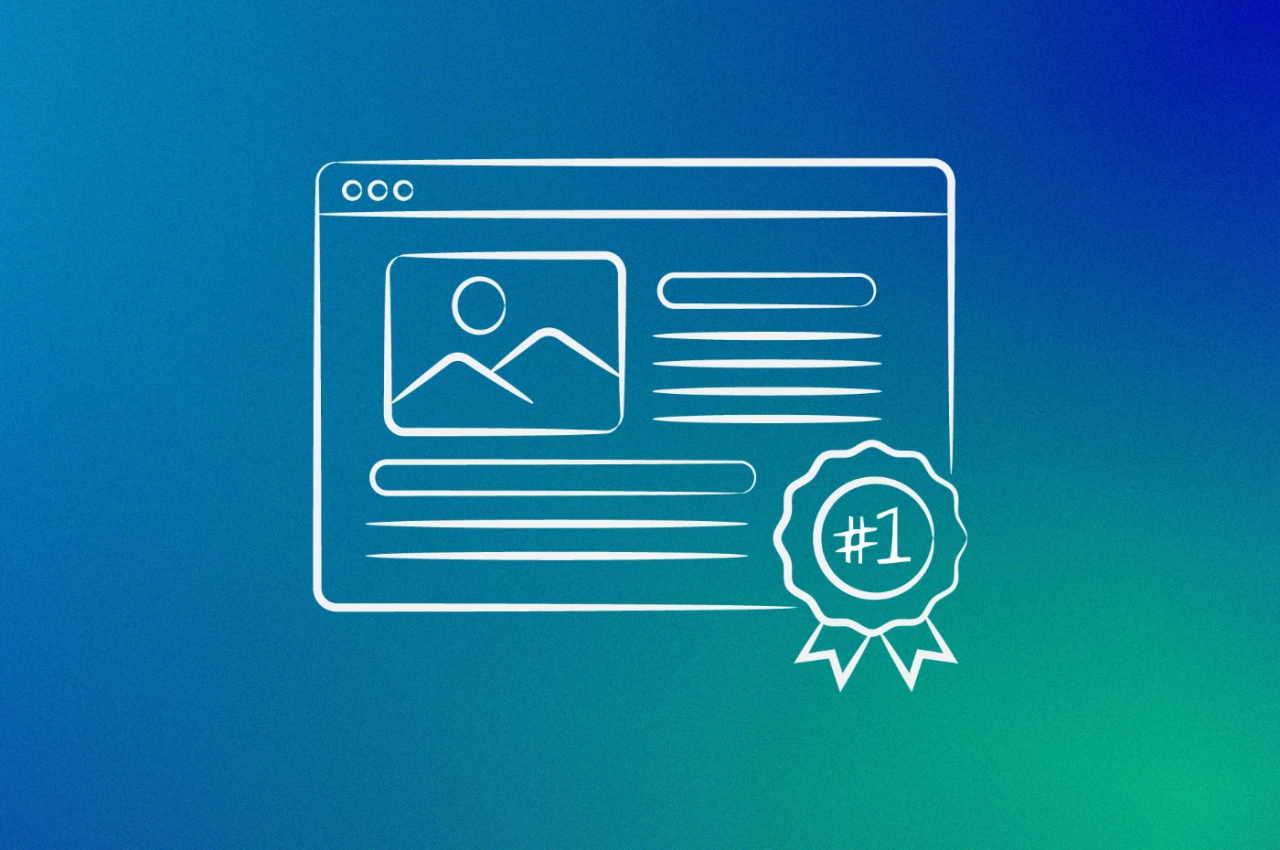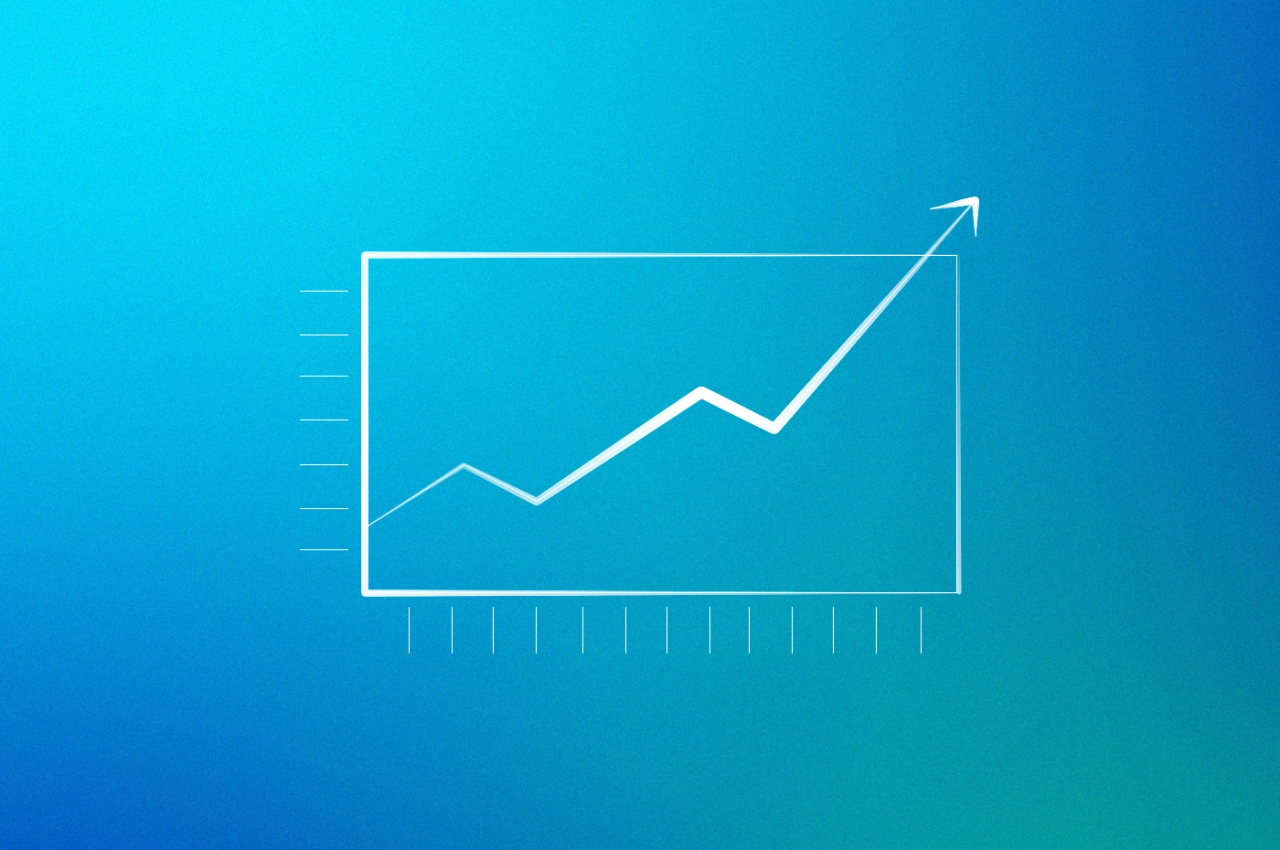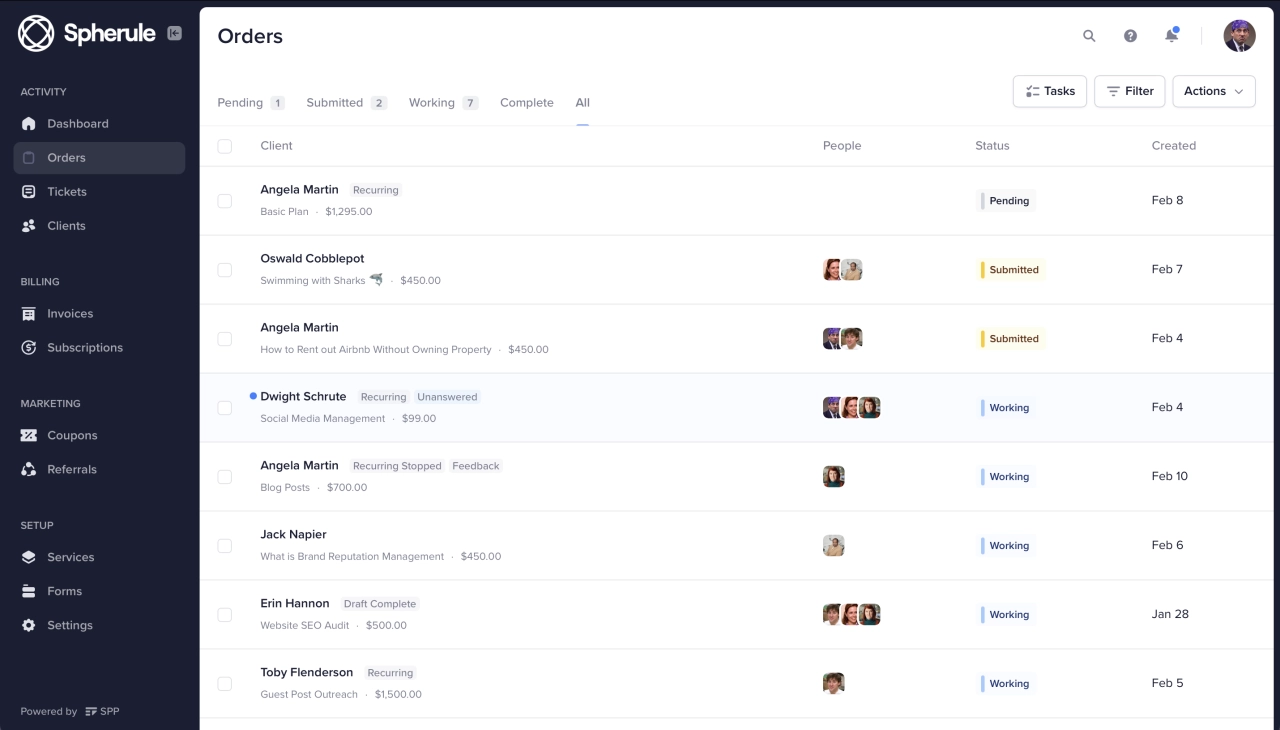Modern marketing is all about data—and lots of it. When starting an agency, understanding how to collect, analyze, and act on this data can make the difference between thriving and merely surviving. Impressions, conversion rates, web traffic, engagement metrics… the list of vital KPIs goes on and on.
I’ve seen many agency owners hit a wall when it comes to looking at their data. Understandable—data is only useful if you know how to interpret it. This is where analytics for agencies becomes critical to your operation.
Whether you’re just launching your business or looking to scale an established agency, the right analytics approach will help you make smarter decisions, win new clients, and impress existing ones with concrete results rather than vague promises.
In this comprehensive guide, I’ll be introducing you to the essential analytics tools that successful agencies rely on, plus showing you exactly how to implement them for maximum impact.
Getting started with analytics for agencies
Before diving into specific tools, let’s establish a quick framework for approaching analytics at your agency:
Set clear objectives first. What exactly do you need to measure? Client campaign performance, internal team productivity, or overall business health? Defining specific goals will determine which analytics solutions you’ll need.
Start with the basics. You don’t need to implement every analytics platform at once. Begin with essential tools that track your most critical metrics, then expand your stack as you grow.
Consolidate your data sources. The average agency juggles data from dozens of platforms. Look for solutions that bring these diverse data points together into unified dashboards.
Make reporting a priority. Analytics isn’t just about internal insights—it’s about communicating value to clients. The most successful agencies translate complex data into clear, actionable client reports.
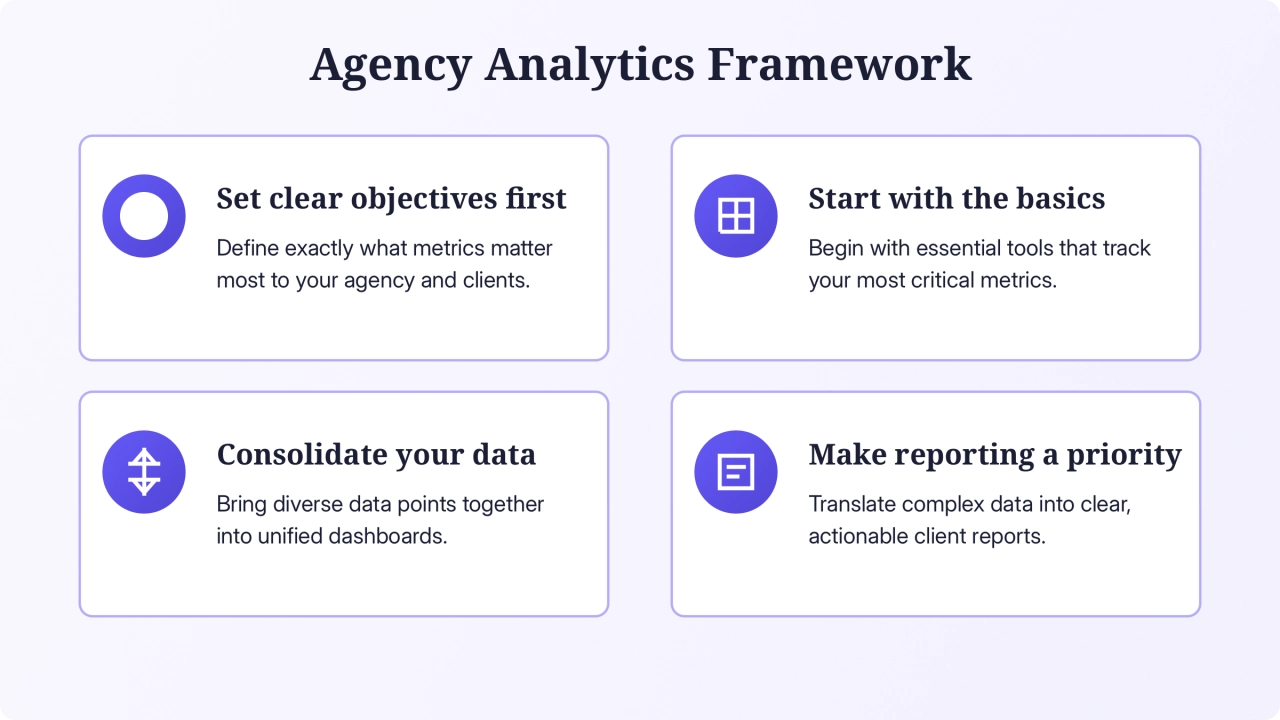
With these principles in mind, let’s explore the analytics tools that will form the backbone of your agency’s data strategy. These solutions will help you transform raw numbers into meaningful insights that drive both your clients’ success and your own.
Top 5 free marketing analytics tools
1. Google Analytics
Google Analytics (GA) is a free web analytics platform that gives you insight into your website’s traffic, audience, and conversions. GA puts a lot of emphasis on measurement, so it’s great for agencies that want to track their progress over time.
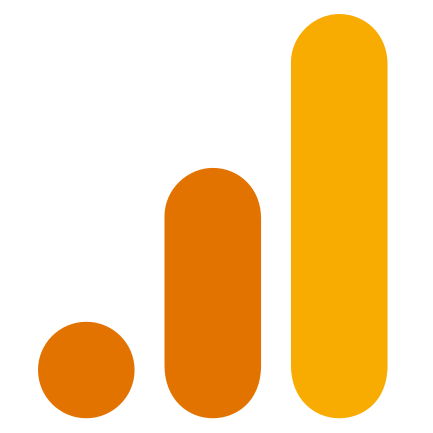
GA is also very easy to set up and use, which is probably why it’s one of the most popular marketing analytics tools on the market. In fact, GA is used by over 35 million websites worldwide.
If you’re not already using Google Analytics, I highly recommend that you set it up as soon as possible.
Key features
notifications and alerts
event tracking
site search tracking
behavior tracking
website analytics
2. Looker Studio
Looker Studio (formerly Google Data Studio) is a free data visualization tool that allows you to create beautiful, informative charts and graphs from your data—regardless of the source. It’s great for agencies that want to quickly visualize their data in an easily digestible format.
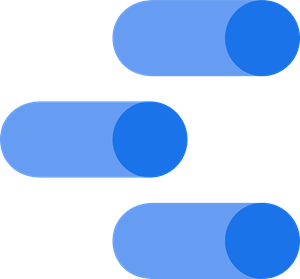
It’s also very flexible. You can connect multiple data sources to GDS and then combine them into a single report. And like GA, Looker Studio is relatively easy to use, so you’ll be able to get up and running quickly.
And as an added bonus, Looker Studio reports can be embedded directly into SPP client portals. This gives agencies the ability to share their data with clients and team members in a secure, interactive format. All you need to do is add a sidebar link for “Reports”.
Key features
multiple data sources
scheduled reports
3. Google Search Console
I know, I know—Google again. But hear me out! Google Search Console (GSC) is a free tool that gives you insights into how your website is performing in Google’s search results.
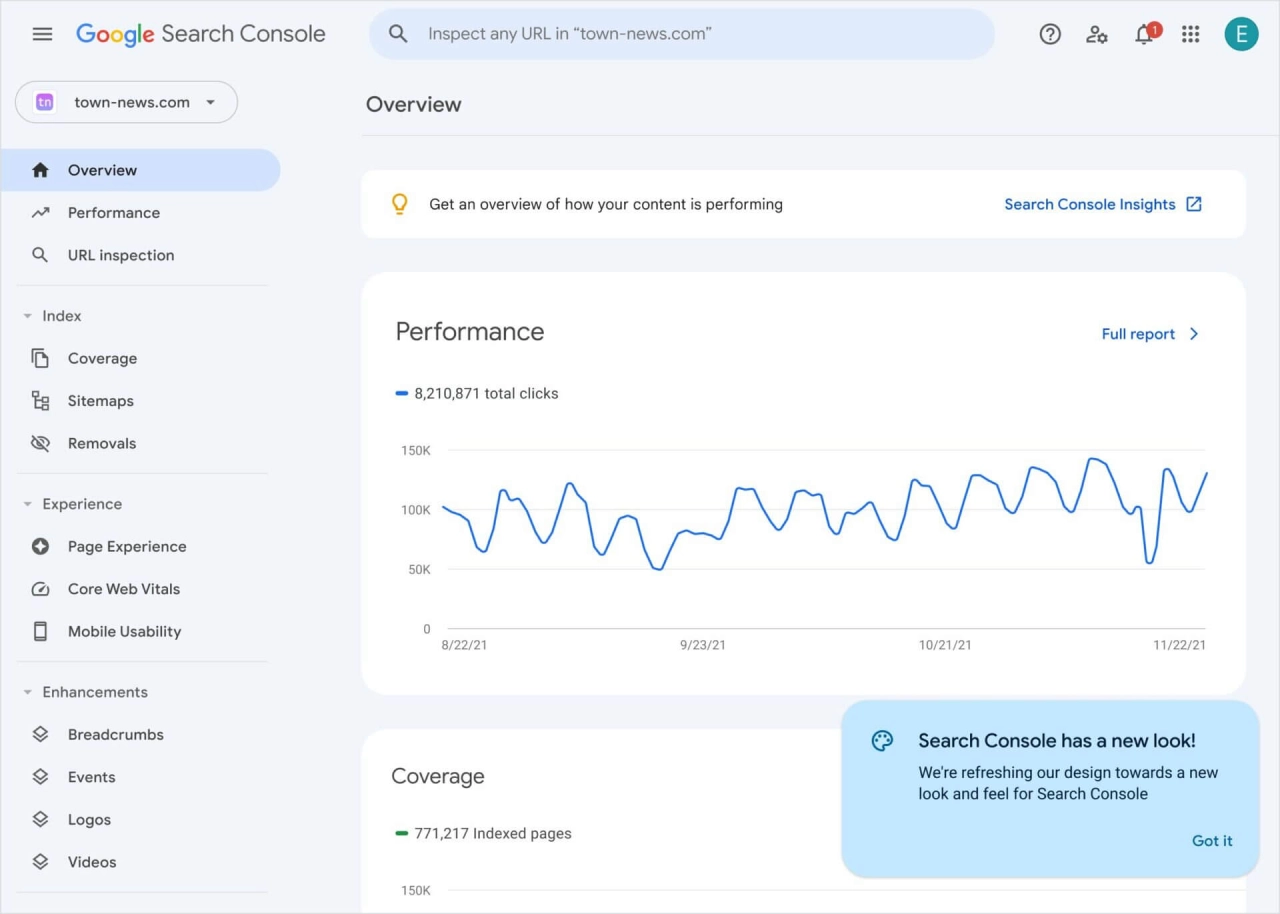
This is valuable information for agencies that want to improve their SEO efforts and get more organic traffic to their site.
GSC also provides data on things like clicks, impressions, click-through rate (CTR), and average position. So if you’re looking to measure the performance of your SEO campaigns without the use of a dedicated SEO software for agencies, GSC is the way to go.
Key features
website traffic data
search analytics
sitemaps
robots.txt testing
4. Heap
Heap is a paid analytics platform (well, “digital insights platform”) that is excellent for agencies that want to get a clear picture of their clients’ journeys.
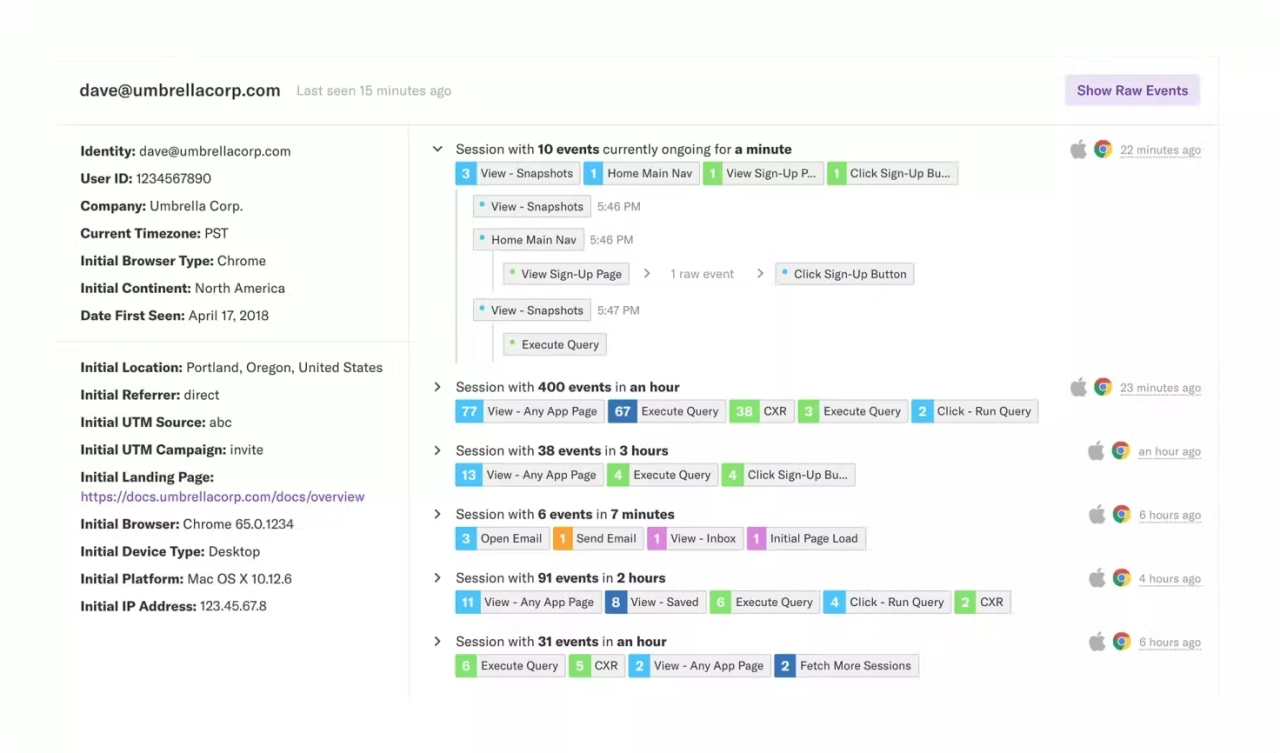
What really sets Heap apart from other tools is its “Session Replay” feature—it’s essentially instant replay for important events in your funnel. Whenever you set up a tracking event in Heap, the system automatically starts recording data about that event.
So, if you want to see what a user did just before or after they converted on your website, you can replay their entire journey up to that point.
Key features
session replay
automatic event tracking
funnel analysis
5. Mailchimp
Mailchimp is a popular email marketing service that offers a free plan for small businesses. This plan includes features like email automation, tracking, and reporting.
For agencies, Mailchimp is best known as an email automation tool. But its reporting and analytics features are also very helpful for measuring the success of your email marketing campaigns.

You can measure and track things like open rate, click-through rate (CTR), unsubscribe rate, and more—all from a central dashboard. If you’re looking for a tool to help you automate your email marketing, Mailchimp is a great option.
Mailchimp also integrates with SPP directly. You can easily add your clients to an email list based on the services they purchase and start sending out automated emails.
Key features
email automation
tracking and reporting
Top 8 paid marketing analytics tools
1. Whatagraph
For agencies juggling multiple marketing channels and client campaigns, Whatagraph offers an all-in-one solution that brings scattered marketing data together in one intuitive platform. Unlike other reporting tools that rely on third-party connectors which can break or lag, Whatagraph builds direct, native integrations with over 50 popular marketing platforms.

What makes Whatagraph stand out is its powerful automation capabilities combined with visual appeal. Marketers can create branded, white-labeled reports in minutes, set them to deliver automatically to clients, and save tremendous time on reporting tasks. The platform’s drag-and-drop interface makes it accessible even for team members without technical expertise, allowing agencies to track performance metrics across multiple campaigns, locations, or clients from a unified dashboard.
Key features
over 50 native integrations with marketing platforms
white-labeled, automated client reporting
cross-channel data blending and visualization
interactive dashboards with custom branding
time-saving report templates and automation
Pricing
Whatagraph offers customizable pricing based on your specific needs rather than fixed plans. According to user reviews, the platform is considered reasonably priced for the time-saving benefits it provides, with users reporting time savings of 30–70% on reporting tasks. For specific pricing tailored to your agency’s requirements, you’ll need to request a quote through their website.
2. AgencyAnalytics
Instead of using a reporting tool that needs you to build reports, you can opt for AgencyAnalytics. The platform has countless integrations that allow you to connect multiple data points and display reports automatically in a client dashboard.

A major selling-point is that AgencyAnalytics allows you to white-label reports, making it ideal for agency client reporting because it’s on-brand. And the best: automated reporting takes a lot of work off your hands. Thanks to the integrations, data collection is fully automated, so the dashboards you create update with fresh information.
Key features
automated client reporting
white labeled reporting
integrates with 70+ tools
client & staff management
Pricing
AgencyAnalytics starts at $12 per month per client campaign for the Freelancer plan and $18 per month per campaign for the Agency plan. An Enterprise plan can also be customized.
3. Mixpanel
Mixpanel is a paid analytics platform that provides agencies with detailed insights into their marketing and product efforts. Mixpanel is often compared to GA, but it offers a much more robust set of features, including things like A/B testing and push notifications.
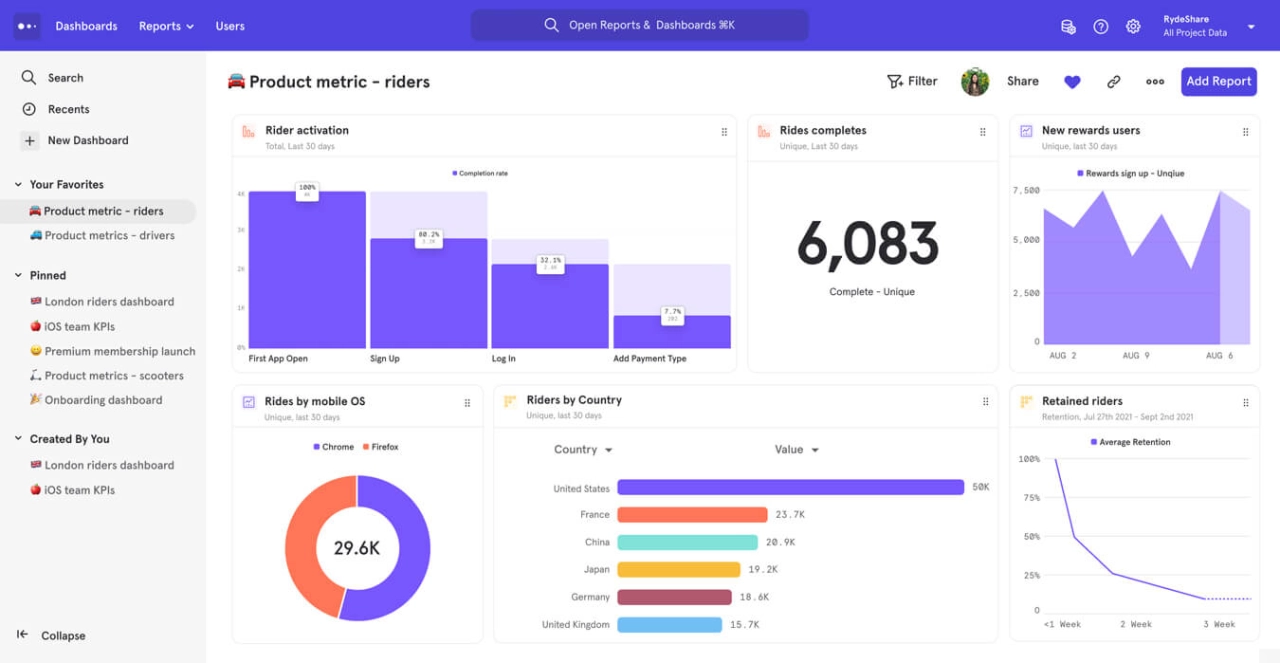
Mixpanel is also very user-friendly—which is one of the reasons why it’s so popular among marketing agencies and enterprise-level companies like Twitter, Lyft, and Forbes alike.
Key features
advanced segmentation
funnels and retention analysis
A/B testing
push notifications
mobile analytics
Pricing
Mixpanel’s free plan offers great value, but most agencies will benefit from the Growth plan ($25/month) due to its advanced reporting and unlimited segmentation.
4. Coupler.io
Automation is essential for streamlining business processes, and marketing analytics is no exception. Coupler.io is a tool that automates marketing analytics allowing you to create self-updating reports and live dashboards.
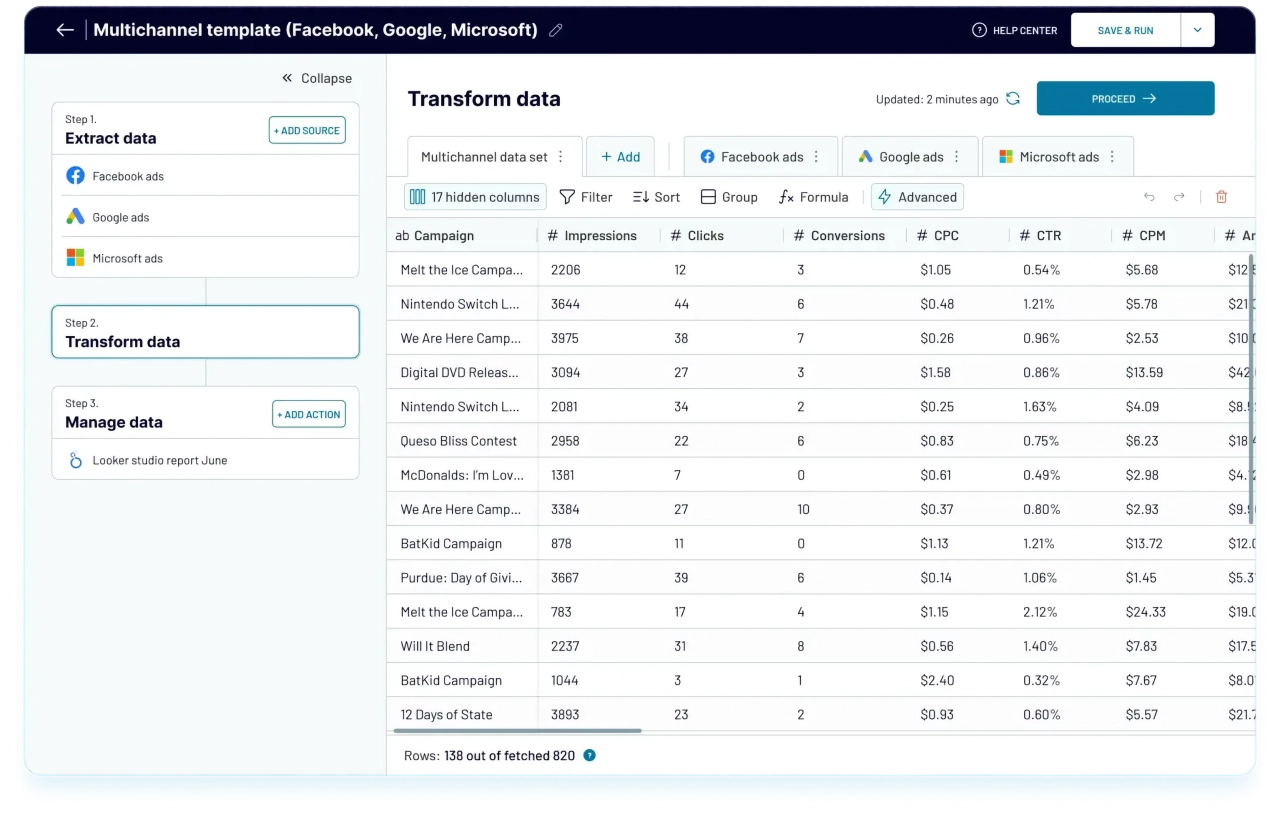
The platform facilitates data exports from your marketing apps to destinations like spreadsheets, data warehouses, and BI tools. Coupler.io integrates with a wide range of marketing applications, including Google Ads, Mailchimp, Google Search Console, and more.
Key features
automatic data refresh
data blending from different sources
ready-to-use dashboard templates
Pricing
Coupler.io offers a 7-day free trial of the Team plan. After that, you can stay on the Free plan or switch to one of the following paid plans: Personal at $24/month, Professional at $49/month, and Team at $99/month. Custom pricing is available for enterprises.
5. Klipfolio
Marketing analytics isn’t just about analyzing data—it’s also about visualizing data to communicate it effectively with whoever needs to see it (i.e., team members, clients, etc.).

This is where Klipfolio comes in. It’s a paid “business intelligence and data visualization” tool that helps agencies turn their raw data into beautiful, easy-to-understand dashboards.
Klipfolio also has a lot of great integrations with popular marketing tools like Google Analytics, Mixpanel, Heap, and more. So, if you’re already using one of those tools to collect your data, you can easily pull it into Klipfolio to visualize it.
Key features
data visualization
dashboard builder
integrations with popular marketing tools
Pricing
Grow starts at $99/month for 15 dashboards and 300 data sources. For more dashboards and/or data sources, you’ll need to upgrade to the Team or Team+ plans.
6. Hotjar
Hotjar is a paid insights platform that’s very similar to Heap. In fact, Hotjar even offers a “Recordings” feature that works similarly to Heap’s “Session Replay.” You can use it to look into client journeys on your website by seeing exactly what visitors see.
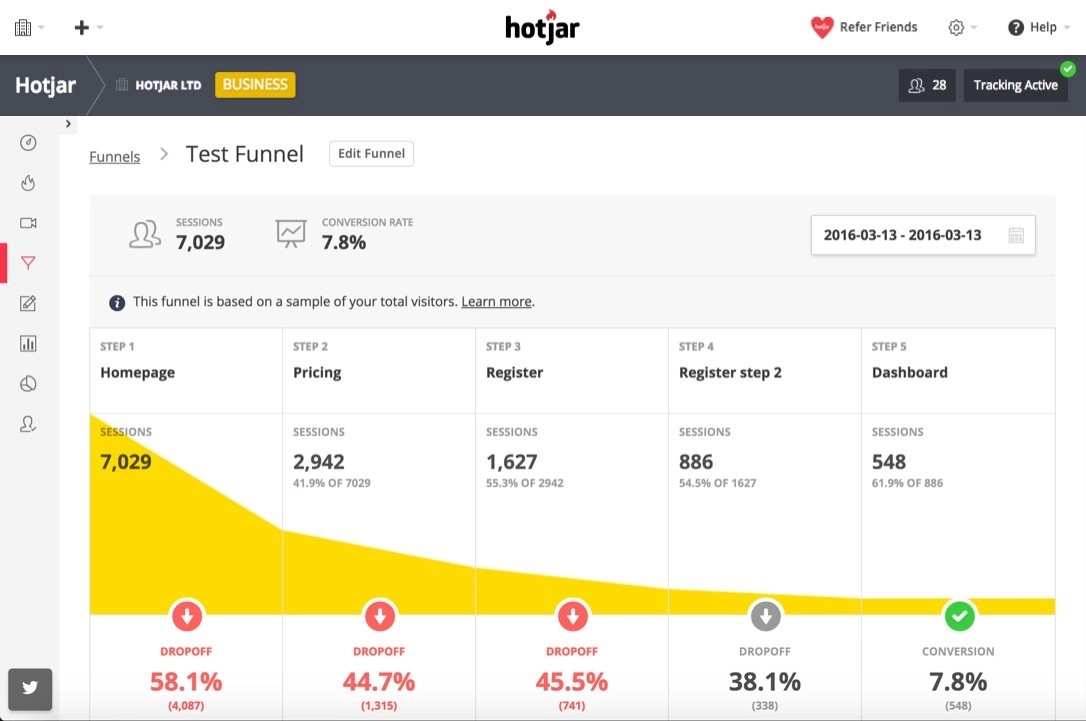
Heatmaps are another powerful Hotjar feature. They give you a visual representation of where users are clicking on your website. They’re another amazing way to visualize visitor behavior—which you won’t be surprised to learn is Hotjar’s bread and butter.
Key features
heatmaps
session recordings
surveys
funnel analysis
Pricing
Hotjar has a free plan available, but most agencies will need to upgrade to at least the Plus plan for $32/month.
7. Ahrefs
If SEO is part of your marketing mix, then you need a tool like Ahrefs in your stack.
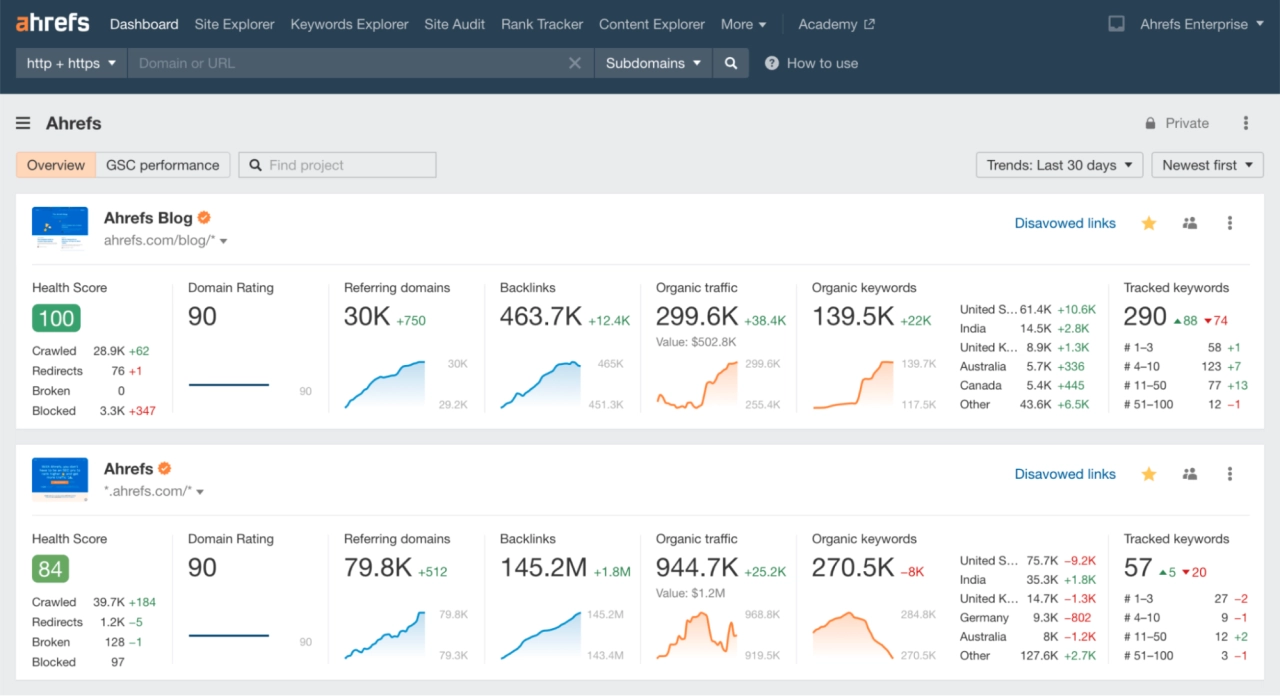
Ahrefs is an all-in-one SEO platform that gives agencies everything they need to manage their (and their clients’) SEO campaigns—from rank tracking to backlink analysis. The platform is great for turning abstract metrics and KPIs into actionable tasks for marketers to execute.
Key features
keyword research
rank tracking
backlink analysis
website audit
Pricing
Ahrefs is quite expensive, but has become an important tool for agencies offering SEO services. Employing a credit-based usage system, each plan comes with 1 Power user who can consume up to 500 credits
Their pricing tiers revolves around the features you can use and the amount of data you can analyze. Additional seats are charged on a pay-as-you-go basis, meaning that the platform only starts charging once users spend credits on various tasks.
The cheapest plan setup starts at roughly $99/month, and the most expensive setups cost $999+/month.
8. Voluum
Marketing agencies thrive on their ability to interpret data beyond mere analysis; they also need tools that can effectively track, manage, and optimize their digital advertising campaigns to maximize ROI and drive business growth.
This is where Voluum shines. Positioned as a pivotal analytics and optimization platform tailored for digital advertisers and agencies alike, Voluum excels in providing comprehensive insights into campaign performance. Agencies can leverage Voluum to track conversions meticulously, analyze traffic sources thoroughly, and optimize marketing expenditures effectively.
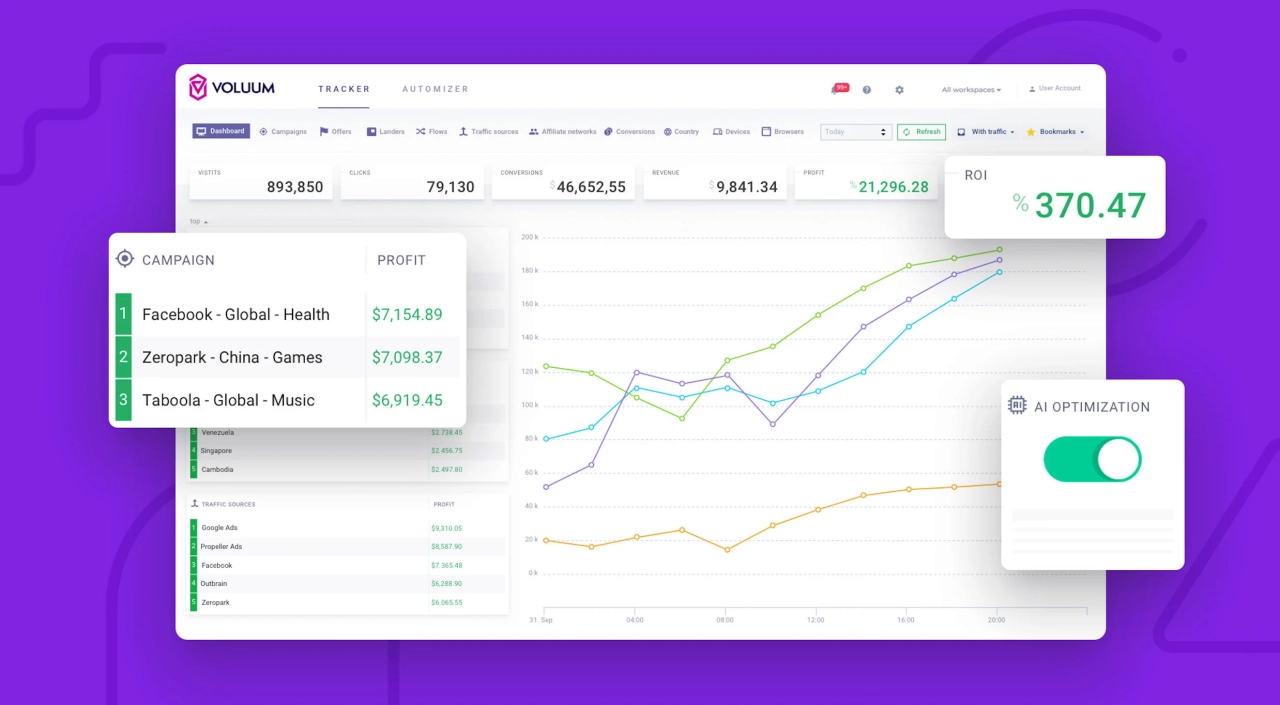
Voluum stands out with advanced analytics, detailed conversion tracking, ROI optimization, and multi-channel attribution. Its user-friendly interface facilitates real-time data visualization, enhancing transparency in campaign performance reporting. Voluum integrates seamlessly with popular marketing tools, consolidating data for streamlined insights. This empowers agencies to make informed decisions, optimize digital advertising strategies, and achieve measurable business growth effectively.
Key features
advanced analytics
conversion tracking
ROI optimization
multi-channel tracking
Pricing
Voluum offers flexible pricing plans tailored to various business needs. The basic plan starts at $69/month, providing essential features for small teams and startups. For larger enterprises requiring advanced analytics and scalability, custom Enterprise plans are available, ensuring comprehensive support and tailored solutions to maximize ROI.
Frequently asked questions
Which analytics tool is best for a small agency with limited budget?
Google Analytics combined with Looker Studio provides a powerful, free analytics foundation that covers tracking, analysis, and visualization needs without any initial investment.
How do I know which KPIs to track for different types of clients?
Start with core metrics relevant to the client's industry (e-commerce: ROAS, conversions; B2B: lead quality, pipeline velocity; content: engagement time, conversion path). Then customize based on their specific business objectives.
Do I need different analytics tools for different marketing channels?
Not necessarily. Comprehensive platforms like AgencyAnalytics can integrate data from multiple channels. However, channel-specific tools (Ahrefs for SEO, Voluum for paid ads) offer deeper insights for specialized agencies.
What’s the easiest way to share analytics data with clients?
Embed white-labeled analytics dashboards directly in client portals using SPP.co integrations with Looker Studio, AgencyAnalytics, or Klipfolio for secure, branded reporting without extra logins.
What if my analytics data doesn’t match my client’s internal data?
This common issue typically stems from tracking implementation differences, attribution window variations, or filtering discrepancies. Reconcile by comparing specific date ranges, confirming tracking setup, and documenting methodology differences.
Can analytics tools actually help win new clients?
Yes. According to research by Vennli, 89% of agencies with pitch-win rates above 50% use data to develop their pitches. Visual dashboards showcasing campaign results significantly enhance client acquisition by making complex data more persuasive and accessible.
Analytics: your agency’s competitive advantage
The most successful agencies today are delivering insights. Research shows that 89% of agencies with high win rates use data to develop client pitches, making analytics not just a nice-to-have, but essential for growth.
No matter your agency’s size or specialty, implementing the right analytics stack creates a virtuous cycle:
Better client results through data-informed strategy adjustments.
More compelling pitches with visual proof of your methodology’s effectiveness.
Operational efficiency by automating reporting and identifying high-ROI activities.
Strategic differentiation in an increasingly competitive agency landscape.
The tools outlined in this guide give you everything needed to transform raw data into actionable intelligence. Start with the free options if you're budget-conscious, then graduate to specialized paid tools as your needs evolve and ROI becomes evident.
Remember that the most valuable analytics aren't necessarily the most complex—they're the ones that answer your clients' most pressing questions clearly and visually. By embedding data-driven decision making into your agency's DNA, you'll not only deliver more value but also build the credibility that turns one-time projects into long-term partnerships.
